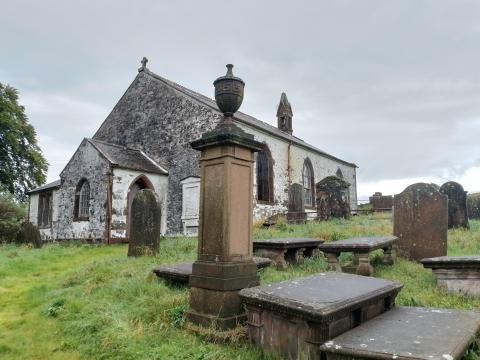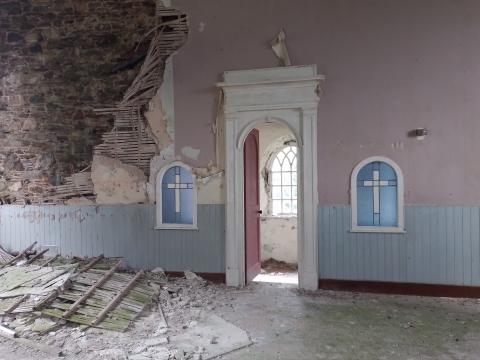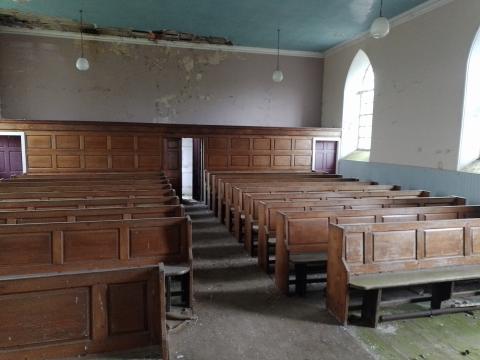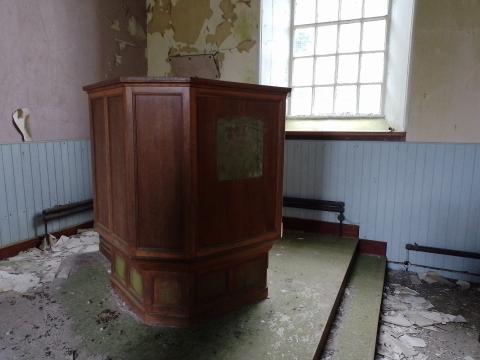Lochrutton Kirk

Lochrutton Church, six miles south-west of Dumfries was built in 1819 though it must have replaced an older building, seeing as some of its graves are of the century before. It is in a remote place, but as Salem Chapel demonstrates, a rural location need not in itself conclude a church’s ministry. As we approached, the door was ajar. Some of the windows were broken, and the place stank of pigeon faeces, the producers of which were merrily breeding in the roof. The pews were still in place, and were in good condition. I wondered why a canny or aspiring antiques dealer had not whipped them out and advertised them for use in the barn conversions and country getaways of the nouveau riche. A prominent pulpit still dominated the room, but from it did no gospel message issue. The flooring was still laid, though it groaned from the piles of droppings, and the back door was hanging off.

I have been to ruined churches before, but this one seemed particularly melancholic. People still alive had worshipped here. The walls had echoed with psalms and hymns in my lifetime. The church was slowly becoming ruinous; dilapidation was leading to decay and dereliction.

While the roof was still sound and a congregation gathered, were there signs that one day it would close and fall? Most churches have shrunk and closed, to be fair, but were there specific signs here? Are there lessons we might learn? I would suggest that, long before the roof caved in:
-The preaching did not emphasise the Bible;
-Theology was not focussed upon the cross;
-Christ’s glory was not the purpose of their gathering;
-The Spirit’s prompting was not the origin of their actions;
-The joy of heaven was not the consolation of their suffering;
-The fear of God was not the beginning of their wisdom.
All churches will go the way of Lochrutton if faithful we are not found to be.

- Log in to post comments


 Sunday Worship 10.45am & 6.00pm
Sunday Worship 10.45am & 6.00pm